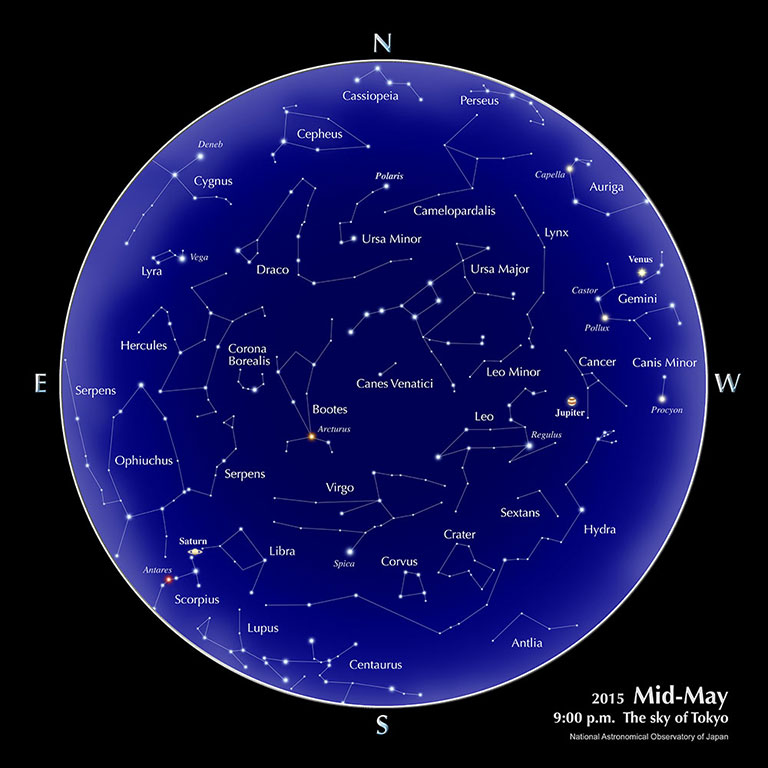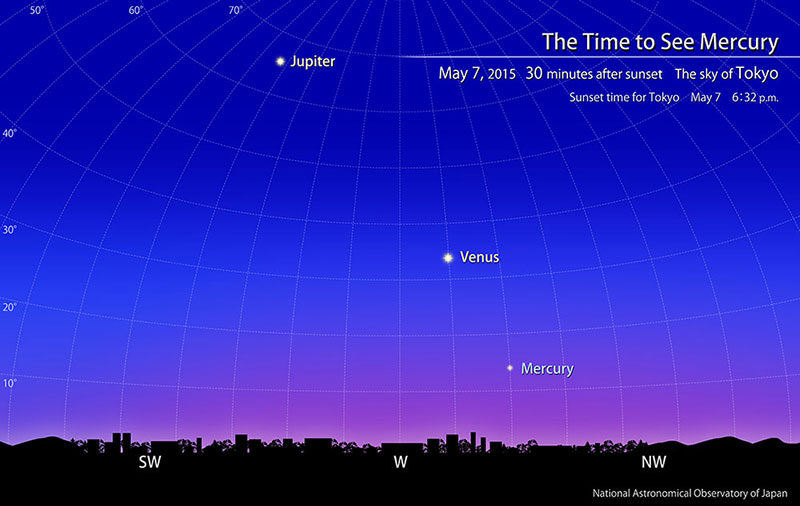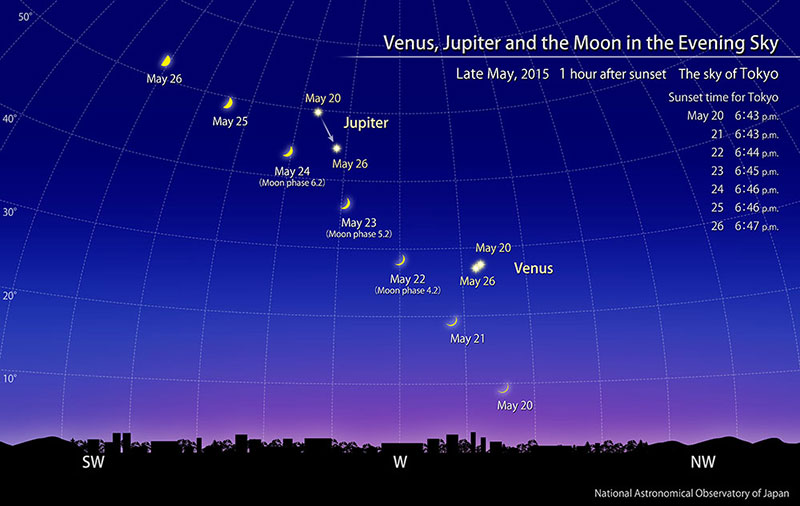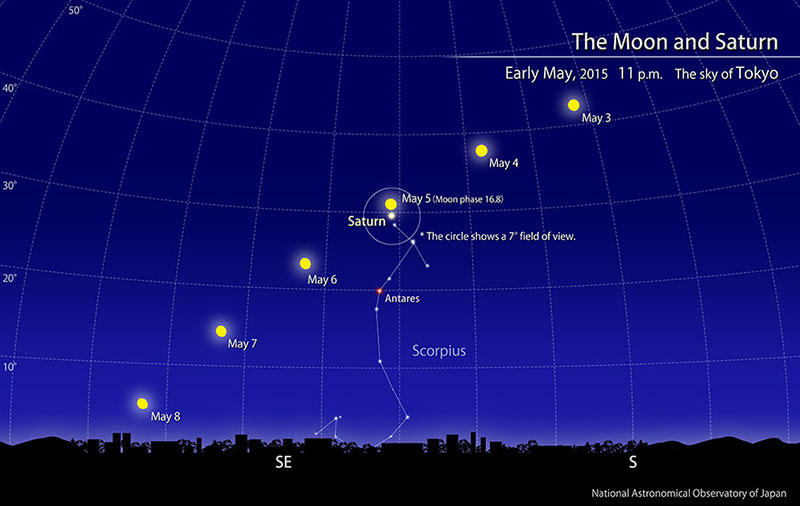May, 2015
Index
The sky of Tokyo

Calendar (May)
| 3 | Constitution Memorial Day [Kenpou Kinen bi] (National holiday) |
| 4 | Full Moon / Greenery Day [Midori no hi] (National holiday) |
| 5 | Children’s Day [Kodomo no hi] (National holiday) |
| 6 | Holiday / Peak of Eta Aquarids Meteor Shower (There is effect of moonlight during whole night) |
| 7 | Greatest Eastern Elongation of Mercury |
| 11 | Last Quarter |
| 18 | New Moon |
| 19 | Mercury at stationary point |
| 23 | Saturn at opposition |
| 26 | First Quarter |
| 31 | Mercury at inferior conjunction |
The posted peak day and time of meteor showers is based on the prediction of IMO(International Meteor Organization).
Planets
- Mercury
- Mercury reaches its greatest eastern elongation on the 7th. It is easy to find in the western sky immediately after sunset in the beginning and middle of the month. At the end of the month, it appears close to the Sun, making it unsuitable for observations. In the beginning and middle of the month, the brightness ranges from Magnitude -0.3 to 2.6.
- Venuns
- Venus shines brightly in the western sky after the Sun sets. For about 30 minutes after sunset, it is above 30 degrees elevation; good conditions for observing.
- Mars
- Mars is positioned close to the Sun and can’t be observed.
- Jupiter
- Jupiter is located in the constellation Cancer. Look high in the southwestern sky after sunset. The brightness is Magnitude -2.1 to -1.9.
- Suturn
- This is a good chance to observe Saturn. At the beginning of the month, it is located in the constellation Scorpius, moving into Libra in the middle of the month. It can be seen in the southern sky around midnight. It reaches opposition on the 23rd.
Source: Ephemeris Computation Office, NAOJ
With the “Sky Viewer” you can easily explore the appearance of a typical urban night sky (planets and constellations are visible).The Celestial Phenomenasection of the glossary explains the planetary phenomena terms: greatest elongation, opposition, conjunction, stationary, etc.
Topics
The Time to See Mercury

Mercury is easy to find, low in the western sky just after sunset. On the days around the 7th when Mercury reaches its greatest eastern elongation, it is at its highest elevation for this year. This is the easiest time to observe it. Towards the end of the month its elevation gradually decreases, its location moves closer to the Sun, making it difficult to observe.
Venus, the Evening Star, much higher than Mercury and even higher still Jupiter shine brightly in the western sky. Please enjoy these 3 planets in the western sky.
Venus, Jupiter and the Moon in the Evening Sky

After sunset in the western sky, Venus, the Evening Star, stands out with a brightness exceeding Magnitude -4. Located higher in the sky, Jupiter shines brightly at about Magnitude -2. From the 21st to the 24th, the Moon passes close to Venus and Jupiter. Please enjoy the Moon passing close to these two bright planets. Also pay attention to the gradually changing shape of the Moon.
The Moon and Saturn

The Moon, having passed full phase, approaches Saturn shining in the constellation Scorpius from the evening until the middle of the night on the 5th. Saturn and the Moon are at their closest about 1:30 am on the morning of the 6th. At this time, the visual separation is a little more than 1 degree (twice the diameter of the Moon). Due to the effect of the bright Moon, Saturn isn’t very noticeable. The sight of the Moon and Saturn close together can just fit within the field of view of binoculars.
Notice how the Moon moves through the sky before and after this day, marking Saturn’s location.